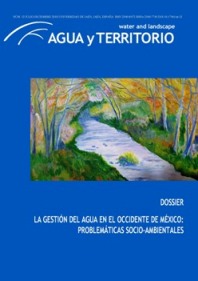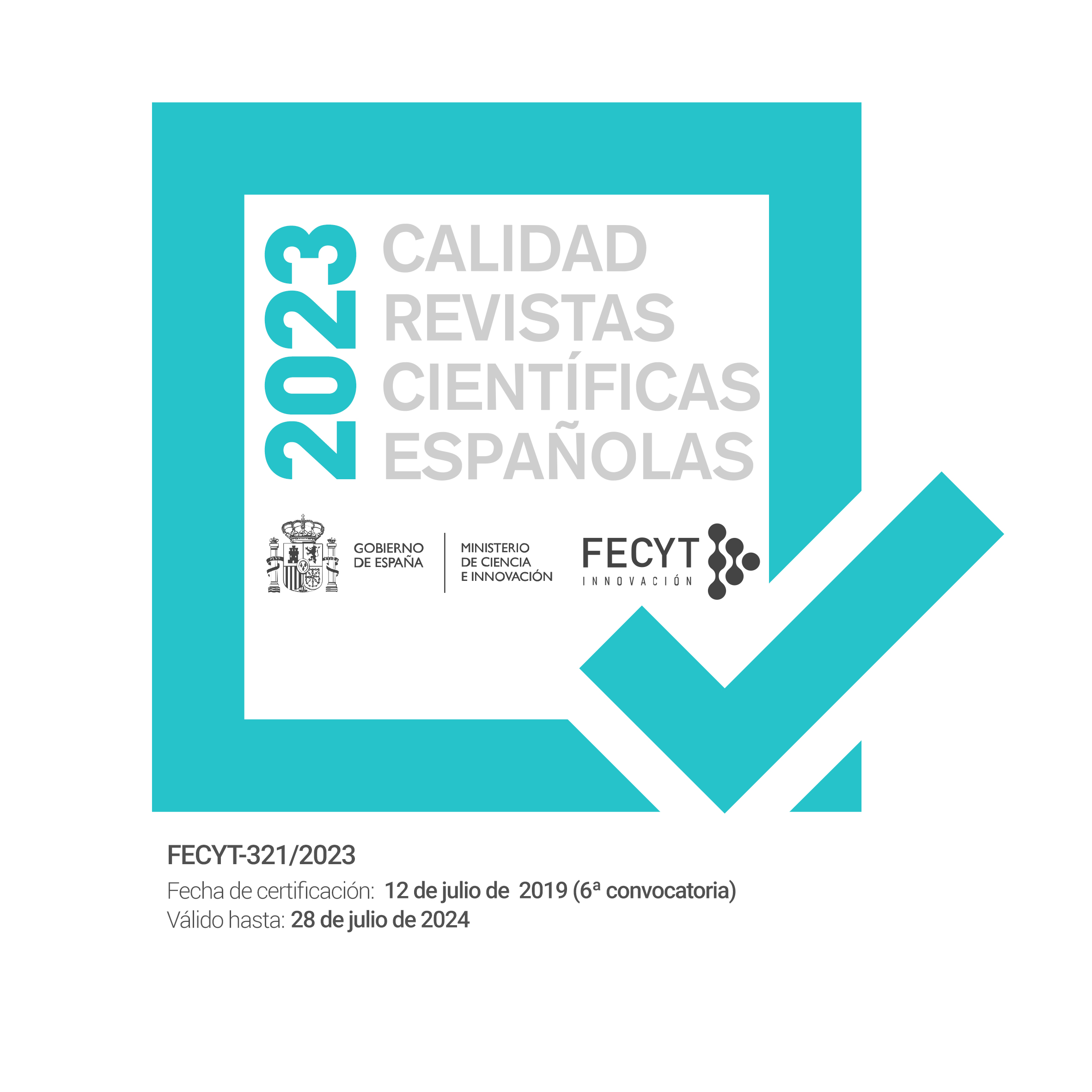Responses to the water crisis in agricultural and urban areas: Case study "Irrigation Project Majes Siguas I" Arequipa, Peru
DOI:
https://doi.org/10.17561/at.12.3532Keywords:
Water crisis, Water resources, Dams, Water management, Majes Irrigation project, PeruAbstract
This paper focuses on the analysis of the responses to the water crisis in the agricultural and urban areas of the Majes Irrigation Project in southern Peru. The objective has been to study not only the management of irrigation water, but also somewhat unexpected urban water management. Methodologically an integrated approach that meets qualitative (interviews) and quantitative (analysis of databases) instruments is adopted. Results indicate that the increasing need for water resources is managed through dams building, while for water demand management, users and government institutions show no real strategies. Water demanding crops, added to traditional management practices create problems of water deficits. The latter are also exacerbated by uncontrolled population and urban growth that results in inequities to access between the formal and the informal built environment.Downloads
References
Arrojo, P. 2011: “Tiempos de cambio en materia de gestión de aguas”. Quaderns de la Mediterrània, 16, 219-228.
Autoridad Autónoma de Majes 2013: El proyecto especial Majes siguas y sus logros. Arequipa. Boletín informativo de la Autoridad Autónoma de Majes.
Autoridad Autónoma de Majes 1985: Las primeras 3.000 has. Estudio definitivo. Arequipa. Autoridad Autónoma de Majes.
Autoridad Nacional del Agua 2009: Política y estrategia nacional de recursos hídricos del Perú. Lima. Autoridad Nacional del Agua.
Bravo, L. M.; Alfranca, O. y Seguí, L. 2013: Viabilidad Económica del uso de agua del Sistema de Regeneración y Reutilización Agua para el riego agrícola en el Parc Agrari del Baix Llobregat. Trabajo Fin de Master. Universidad Politécnica de Cataluña, Barcelona.
Bury, J.; Mark, B. G.; Carey, M.; Young, K. R.; McKenzie, J. M.; Baraer, M.; French, A. & Polk M. H. 2013: “New Geographies of Water and Climate Change in Peru: Coupled Natural and Social Transformations in the Santa River Watershed”, Annals of the Association of American Geographers, 103(2), 363-374, https://doi.org/10.1080/00045608.2013.754665
Chávez, C.; Fuentes, C. y Ventura, E. 2010: “Uso eficiente del agua de riego por gravedad utilizando yeso y poliacrilamida”, Terra Latinoamericana, 28(3), 231-238.
Dworak, T. et al. 2007: European water saving potential. Berlin. Ecologic editorial.
European Enviroment Agency 2009: Water resources across Europe — confronting water scarcity and drought. Luxembourg. Enviroment-European Commission.
FAO, 2003: World agriculture: Towards 2015/2030 an FAO perspective. London. Earthscan.
Fernández, C. y Mancisidor, M. 2013: El derecho humano al agua: Situación y retos de futuro. Barcelona, Icaria.
Gobierno Regional de Arequipa (1981). Plan general de desarrollo del proyecto Majes. Arequipa (Perú), GRA.
Gómez, D.; Saurí, D. 2003: “Modelos urbanos y consume de agua. El riego de jardines privados en la región metropolitana de Barcelona”. Investigaciones geográficas. 32, 5-17, https://doi.org/10.14198/INGEO2003.32.02.
Guerra, J.; Apaclla, R.; Figueroa, A. y Hatta, M. 2008: “Grandes y pequeñas irrigaciones: una evaluación”, en VV. AA.: Cepes, s .d, 79-80. Disponible em: http://www.cepes.org.pe/pdf/OCR/Partidos/gestion_agua_crisis_institucional/gestion_agua_crisis_institucional_cap3.pdf].
Guevara, A. 2008: Derechos y conflictos de agua en el Perú. Lima, Departamento académico de derecho de la Pontificia Universidad Católica del Perú.
Izcara, S.; Andrade K. (Eds.) 2003: La entrevista en profundidad teoría y práctica. Ciudad Victoria Tamaulipas, México: Universidad Autónoma de Tamaulipas.
Langford, M. 2007: “Los derechos humanos y las crisis mundiales del agua: de la ley a la práctica” Melbourne, Centro Castan de Derechos Humanos, University of Monash, Melbourne, 57-58.
Morales, A.; Rico, M. A. y Hernández, M. 2005: “El trasvase Tajo-Segura”, Observatorio medioambiental, 8, 73-110.
Municipalidad Distrital de Majes 2012: Plan de desarrollo urbano de la ciudad Majes-Villa el Pedregal 2012-2021. Majes. Municipalidad Distrital de Majes.
Prat, N. 2004: La nova cultura de l’agua: Gènesi i conceptes. Barcelona, Departament d’Ecologia. Universitat de Barcelona.
Pulido, A. y Vallejos, Á. (Eds.) 2003: Gestión y contaminación de recursos hídricos. Almería, Universidad de Almería.
Romero, H. 2014: “Ecología política y represas: elementos para el análisis del Proyecto HidroAysen en la Patagonia Chilena”. Revista de geografía, 57, 161-175.
Sabas, C. A. y Paredes, D. 2009: “Impacto del crecimiento de Pereira sobre el recurso hídrico en la cuenca del rio Cestillal”, Peer Reviewed. 15, 399-404.
Santacruz, G. 2007: Hacia una gestión Integral de los recursos hídricos en la cuenca del rio Valles, Huasteca, México. Tesis Doctoral. San Luis Potosí (México), Universidad Autónoma de San Luis Potosí.
Sepúlveda, I. et al. 2015: “Aguas, riego y cultivos: Cambios y permanencias en los Ayllus de San Pedro de Atacama”, Estudios Atacamenos, 1(51), 185-206, http://dx.doi.org/10.4067/S0718-10432015000200012.
Vera, J. y Vincent, L. 2013: “Community supplies and regional water transfers in the Colca Valley, Peru”. BioOne. 33, 195-206.
Zebadua, E. (Dir.); Calleja, E. (edit.) 2014: Agua cultura y ciudadano. México, Zenago editores.
Downloads
Published
How to Cite
Issue
Section
License
© Universidad de Jaén-Seminario Permanente Agua, territorio y medio ambiente-CSIC.
The originals published in the printed and electronic editions of this journal are the property of the University of Jaén and the Seminario Permanente Agua, territorio y medio ambiente (CSIC), as well as the universities that publish specific monographs in Latin America or Europe. The origin must be cited in any partial or total reproduction.
Unless otherwise indicated, all the contents of the electronic edition are distributed under a "Creative Commons Attribution 4.0 Spain" (CC-by) licence. You can consult from here the informative version and the legal text of the license. This circumstance must be expressly stated in this way when necessary.














